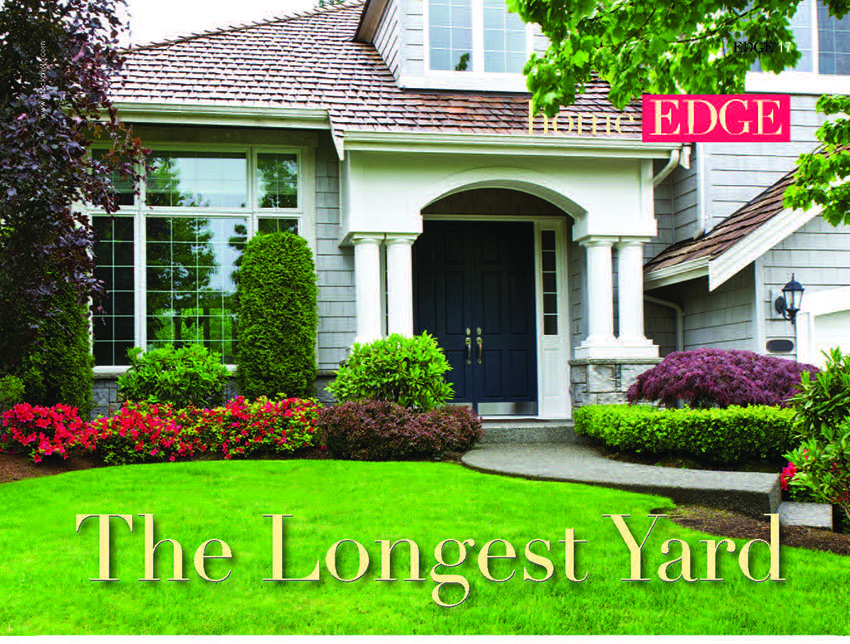A green landscaping strategy demands planning and perseverance.
In today’s culture of heightened environmental awareness, our gardens, yards and other outdoor living spaces not only have to look good, they have to make us feel good, literally and figuratively. Calling a lawn or landscape “green” doesn’t necessarily make it so, just as calling food “organic” doesn’t guarantee that it is. The quest for personal landscape perfection traditionally focused on irrigation, pesticides, weed control and maintenance, all weighed against the various associated costs.

www.istockphoto.com
Now, however, more and more New Jersey homeowners are raising the bar and demanding that their landscape design gives back more than meets the eye. Not only do we seek healthy and hardy plants, we want our outdoor living spaces to help keep us healthy and happy. Professional landscapers are being asked to apply holistic principles in designing both softscape plantings and hardscape elements, such as fire pits and places, outdoor kitchens, and child- and animal-friendly zones.
In a modern context, the key to successful landscaping lies in sustainability. To get the most from an often-sizeable investment, homeowners look for a landscape design that is low-maintenance, drought tolerant and filled with native specimens. It may also include edible, herb, and specialized flower gardens, cultivated for their health and healing qualities as well as their resiliency and eye appeal.
Growing in popularity, especially in urban areas, are container- and raised-bed gardens that offer complete control over soil conditions. For city dwellers, options include roof gardens and living walls. There also are bee gardens, which focus on pollen-rich planting to support bees, as well as gardens that cater to hummingbirds, butterflies, and certain bats that feed on flower nectar. Then there are special gardens that lend romance and mystery, such as a night garden featuring plants from the noctiflora group, which release their fragrances only after sundown. If aroma is a prime consideration, then a scented garden is the ideal.
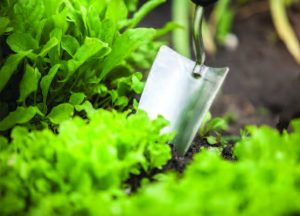
www.istockphoto.com
The value of the vegetable garden should not be underestimated. Even the staid British Royal Botanic Gardens elevated this timeless genre by presenting a special event in 2013 called IncrEdible Edibles. Some gardeners have gone “beyond edible” to incorporate vineyards on their property to assure a supply of organic grapes for their wine cellars (and a possible agricultural tax exemption, as well).
Needless to say, there are certain practical elements that go into successful gardening. Every garden, for example, should be season-appropriate, with staggered blooming periods to assure the garden shows to best advantage throughout the year. In challenging cold-weather situations (such as New Jersey this past winter), consideration should be given to some architectonic elements, such as trees that present well even when leafless and snow-blanketed.
A $73 Billion Industry
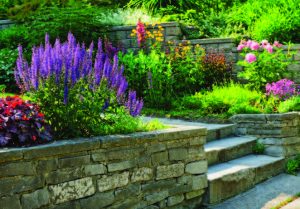
www.istockphoto.com
Paul Martoccia points out another interesting aspect of the trend toward environmentally friendly landscape design. He runs Martoccia Landscape Services in Somerset County, a business started by his father in 1962. In the past 10 years, the company has completed 800 projects. Its typical client five years ago was age 50-65 and anticipating retirement, with women as the primary decision-makers. Today, the clientele is younger (late-30s to 40s, he says) with men and women on an equal footing about their landscaping expectations. Rather than the simple patio of 10-15 years ago, Martoccia adds, homeowners are interested in creating what he calls a “backyard destination.” These projects involve a lot of client interaction and site analysis—terms that were not exactly part of the landscaping lexicon back in the early ’60s.
All told, the annual price tag for landscaping in the U.S. is$73 billion. According to a 2014 Ibis World market research report, there are almost 400,000 U.S. companies with almost 900,000 employees. Companies range from small multi-generational father & son residential operations to billion-dollar commercial firms. Projections indicate that the biggest increase in consumer spending will be in the design/installation area. And within that growth sector is a rising demand for environmentally friendly designers.

www.istockphoto.com
So does that mean more companies are bringing aboard workers who understand how to create a healthy, sustainable outdoor space? According to Burke Honnold, owner of T. Burke Honnold Landscaping in Monmouth County, it does not. “Today, there are more landscape ‘designers’ with far less landscape education out there,” he says. Honnold’s greatest challenge, in fact, is hiring qualified help. He considers himself fortunate to have three core employees on board with a decade or more of experience.
GARDEN VARIETY
To start a… Look for…
Hummingbird Garden Flowering plants that are red in color and tubular in shape (e.g., Bee Balm or Cardinal Flower).
Butterfly Garden Tropical Sage, Butterfly Bushes, Phlox, Purple Coneflower, Zinnias, and Sedum.
Bat Garden As an organic pest control, they need shelter (trees and large shrubs), water features, and night-blooming flowers (e.g., Moonflower, Primrose, and Nicotania).
Moon or Night Garden Night-bloomers such as Moonflowers, Four-o-clocks, Angels’ Trumpets and even some grasses to add soothing swishing sound effects.
Healing Herb Garden Culinary: (Sage, Rosemary, Thyme, Mint)
Medicinal: (Motherwort, Passionflower, Echinacea, Wild Bergamot)
Aromatic: (Lavender to calm, Eucalyptus to invigorate)
Often, homeowners will engage a landscape architect to create an environmentally friendly outdoor area. The landscape architect’s credentials are relatively more rigorous, so it is not surprising that the fees are usually higher. That being said, the modern mission for both the landscape architect and landscape designer is much the same, and many landscaping companies tout their eco-consciousness in their company names (e.g., Keep It Green Landscaping in Bergen County and Landscape Aesthetics in Somerset County).
Recent statistics indicate 80 percent of Americans consider themselves to be environmentally conscientious when it comes to their private grounds. No surprise then that Feng Shui consultants have found new opportunities in our backyards. Laura Benko, who has taught design at the Pratt Institute and was recently named Best Feng Shui Consultant by New York magazine, applies her expertise to create a more meaningful outdoor environment. “Landscaping with Feng Shui principles allows for a deeper meaning and connection to your environment,” she says.
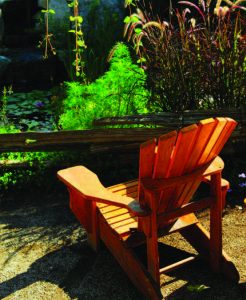
www.istockphoto.com
“It’s not just sustainable landscaping, but emotional sustainability too.”
Gone are the days when a rolling, weed-free, golf-course-quality lawn represented everyone’s suburban ideal. Back then, you hired a lawn service, installed a sprinkler system, planted a few geraniums, and assumed you were done. Homeowners today tend to have a more cultivated vision for their property, as well as a greater awareness and concern for the environment. Indeed, we may still peer over the fence and wonder why the grass is greener on our neighbor’s lawn. But now we are asking the right question: At what cost?
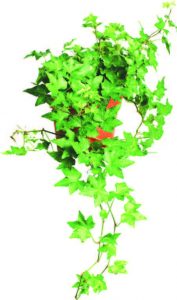 INSIDE OUT
INSIDE OUT
Some relatively common plants offer a surprising array of cleansing and air-filtering attributes. They live outdoors in warm weather, but need to be moved indoors with the first chill.
Common Name
Aloe Vera Aloe Barbadensis
English Ivy Hedera Helix
Boston Fern Nephrolepsis Exaltata Bostoniensis
Gerbera Daisy Gerbera Jamesonii
Mums Chrysanthemum Morifolium
Peace Lily Spathiphyllum
Philodendron P. Cordatum
Weeping Fig Ficus Benjamina
Snake Plant Sansevieria Trifasciata
Editor’s Note: Chris Gibbs writes about a wide range of home- and wellness-related topics, and also edits EDGE’s It’s A Gift pages. Special thanks to the experts who contributed to this story, including Laura Benko (laurabenko.com), Paul Martoccia (njlandscaping.com) and Burke Honnold (honnoldlandscaping.com).

